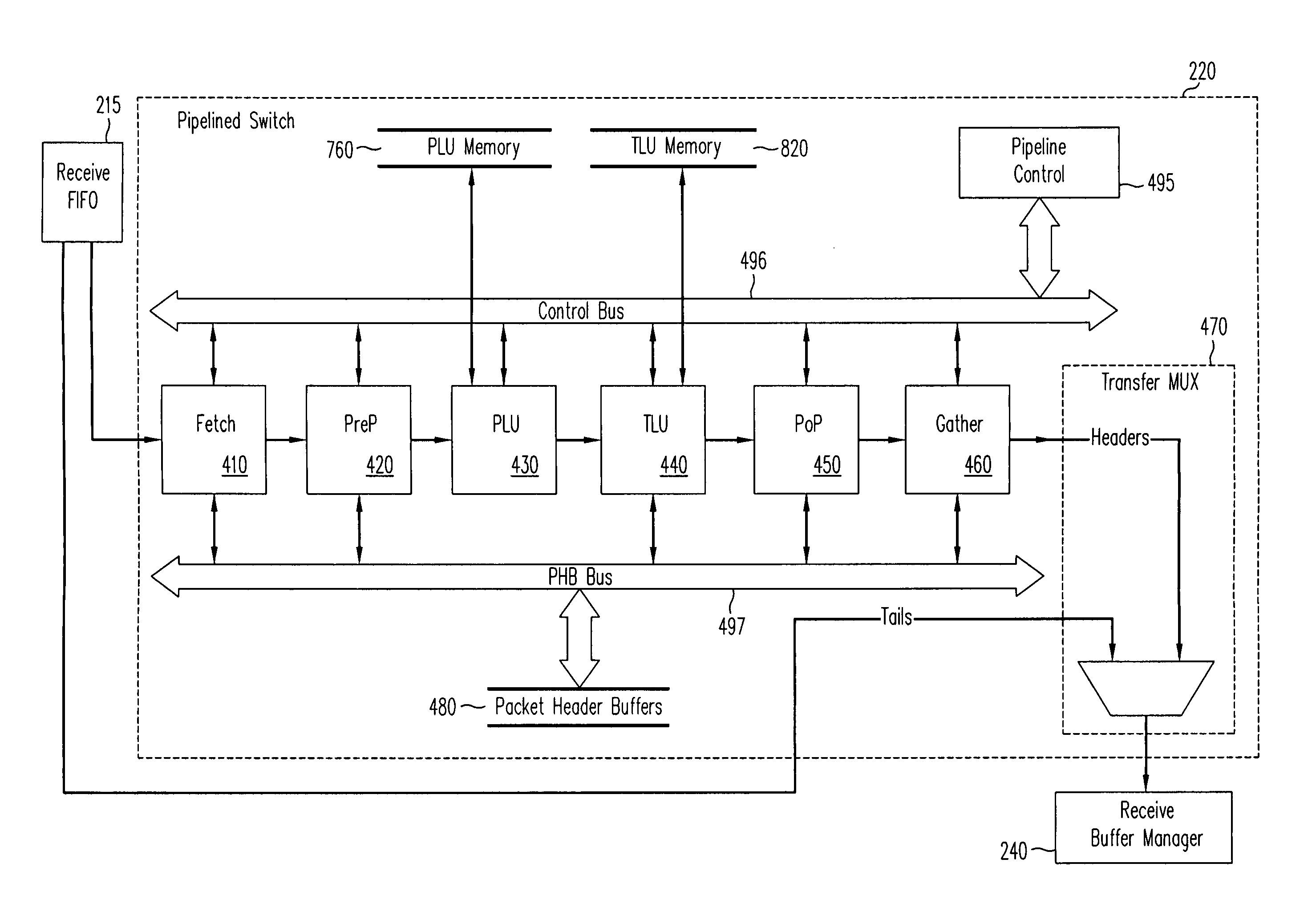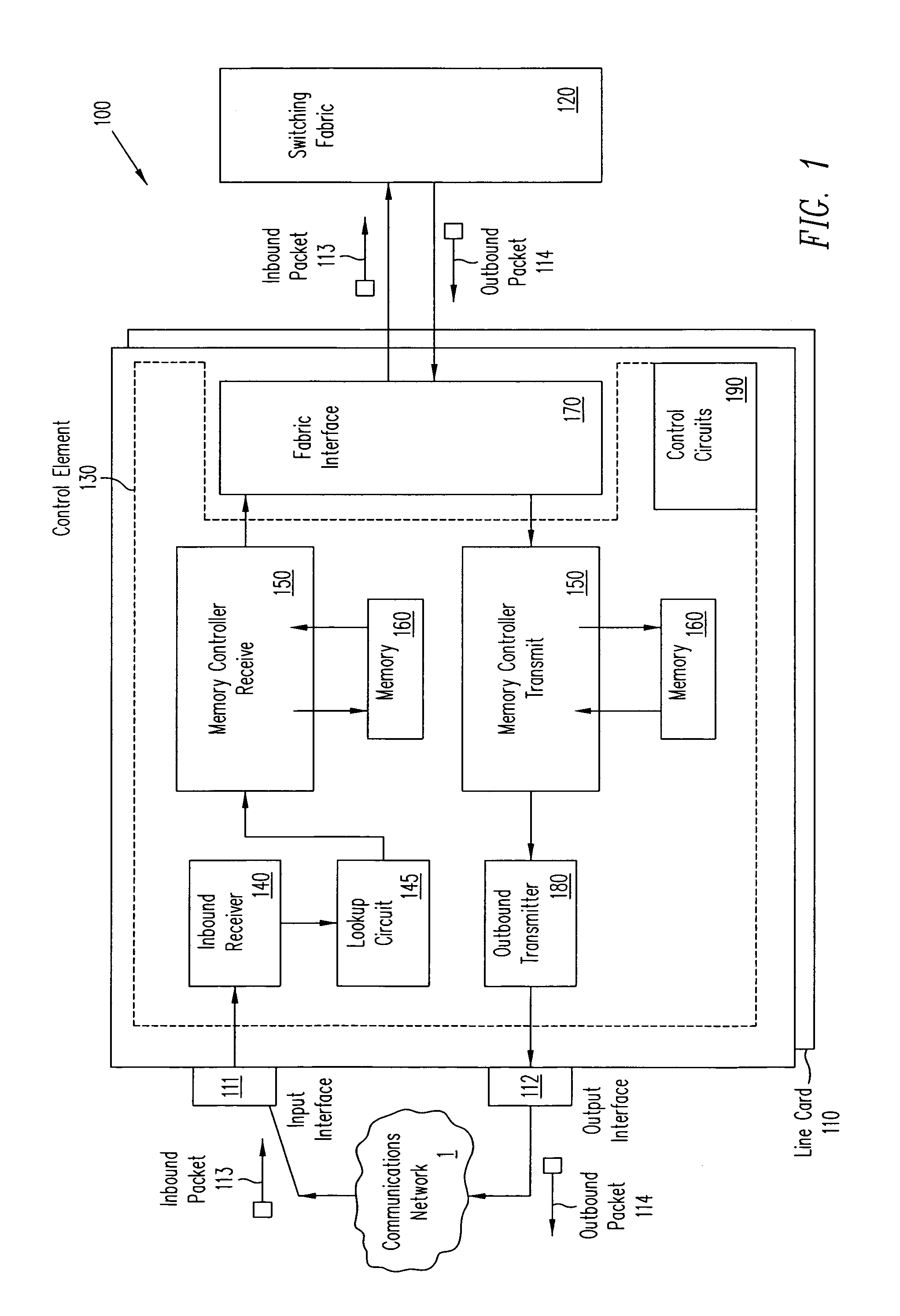Pipelined packet switching and queuing architecture
- Summary
- Abstract
- Description
- Claims
- Application Information
AI Technical Summary
Benefits of technology
Problems solved by technology
Method used
Image
Examples
embodiment
Representative Embodiment
[0205]PLU Operation: M-Trie Database
[0206]For each lookup, PLU 430 uses an N-way branch tree. This section provide an explanation of the M-Trie structure using, by example, a 256 way branch tree. One of ordinary skill in the art will of course appreciate that other configurations having more or less than 256 branches are possible. Accordingly the present invention is not limited in the number of branches.
[0207]Each octet in the IPv4 address represent a different layer in the tree. See FIG. 16. The first octet belongs to the first layer 1610 which has 256 entries, one for each value of the 8 bits. Each entry contains a pointer that either points to the starting address of the second layer 1620 (i.e., L=0, the entry represents a node) or points to a leaf address (L=1). The second layer for each of the first layer entries has also 256 entries and each entry can also either point to a leaf or is a node and thus points to the third layer 1630. Again, each third l...
PUM
 Login to View More
Login to View More Abstract
Description
Claims
Application Information
 Login to View More
Login to View More - R&D
- Intellectual Property
- Life Sciences
- Materials
- Tech Scout
- Unparalleled Data Quality
- Higher Quality Content
- 60% Fewer Hallucinations
Browse by: Latest US Patents, China's latest patents, Technical Efficacy Thesaurus, Application Domain, Technology Topic, Popular Technical Reports.
© 2025 PatSnap. All rights reserved.Legal|Privacy policy|Modern Slavery Act Transparency Statement|Sitemap|About US| Contact US: help@patsnap.com



